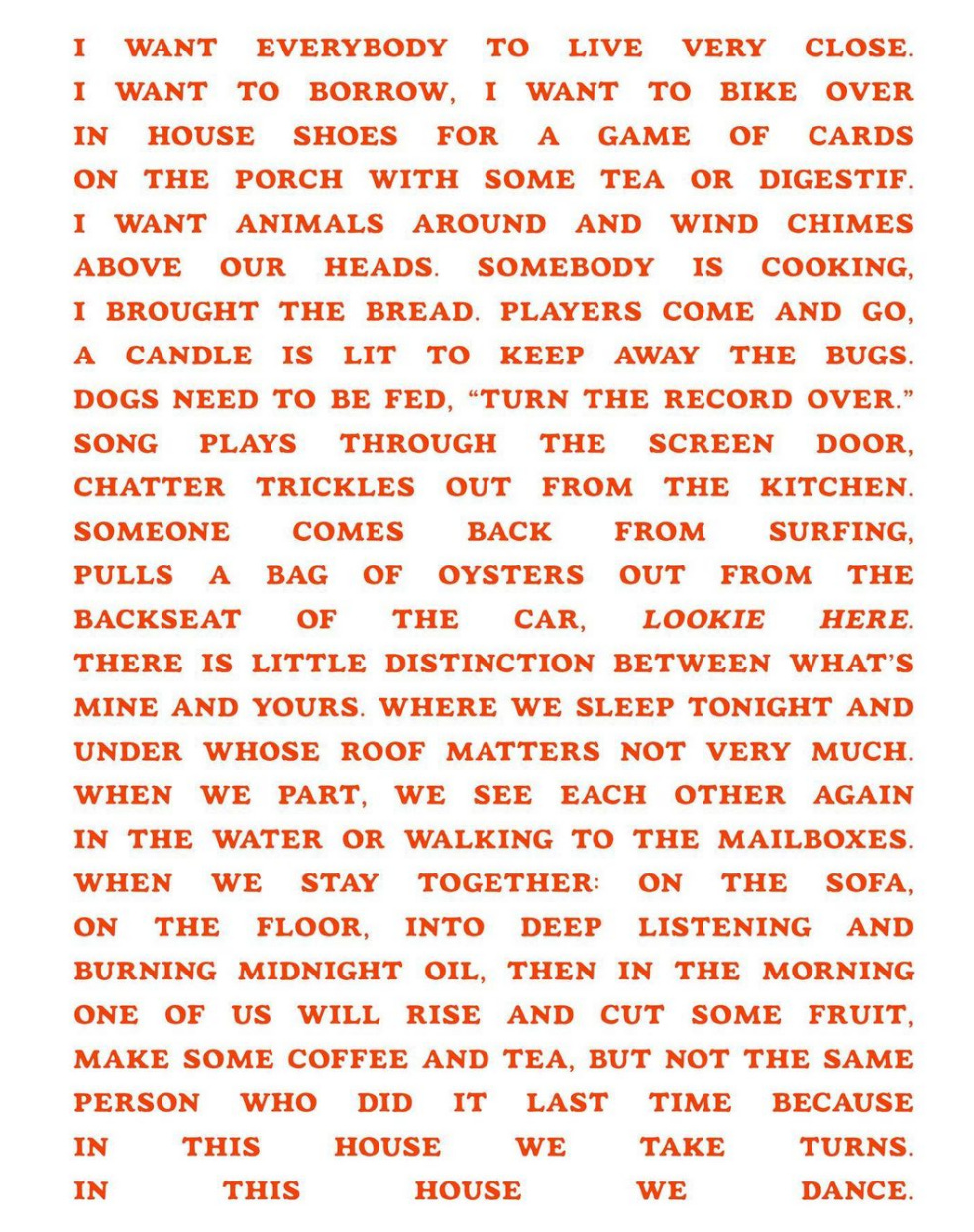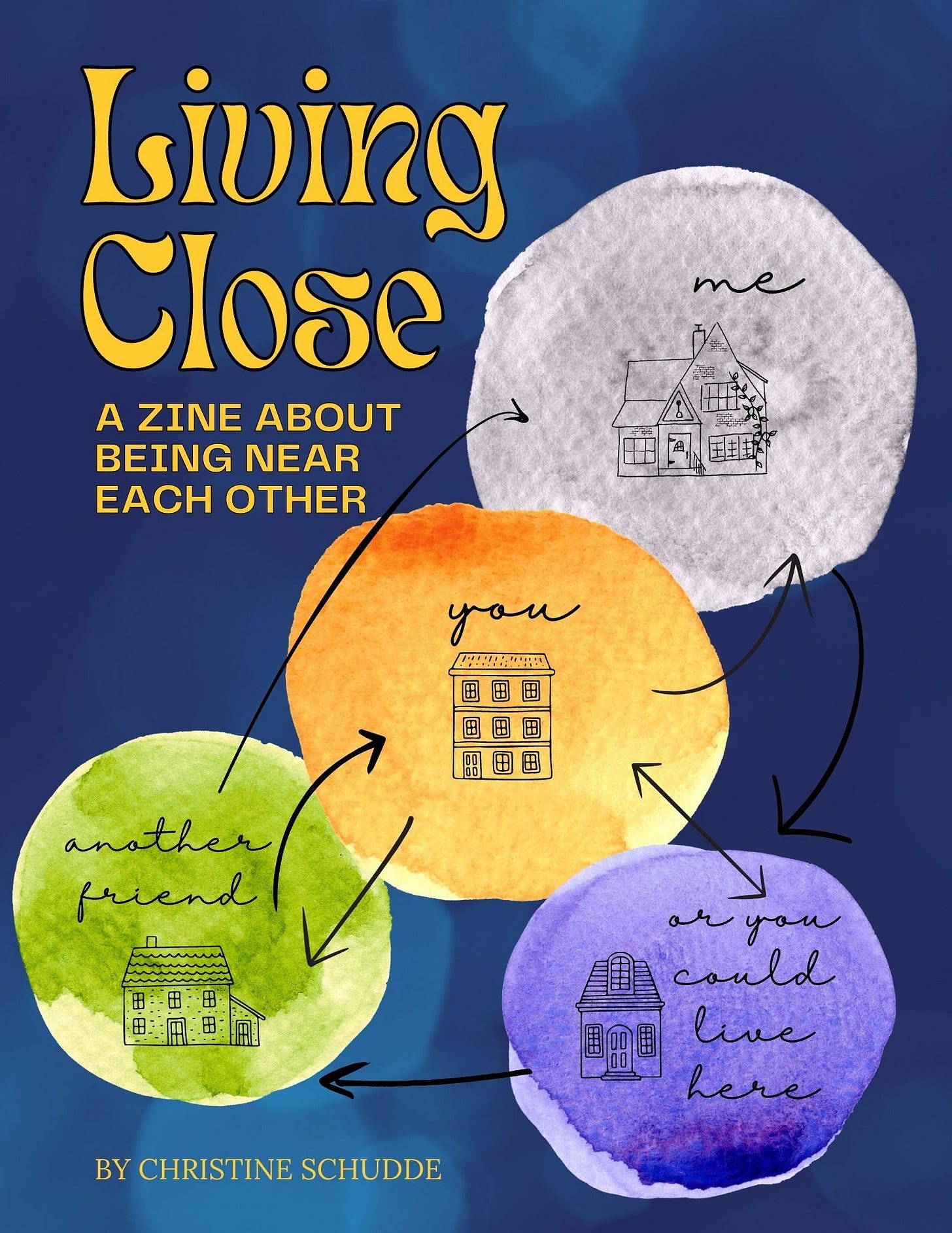Infrastructure for friendship
In which I once again talk about the dream of living close to your friends
Everyone has a group chat where they dream about buying some property and starting a commune with their friends, right? Except my dream is that we buy houses next to each other, or attached to each other, or one big building with apartments for each of us, and we have a pub that we walk to and the library and a good bakery and maybe some shops.
I’m thinking about proximity. Physical closeness. Social un-distancing. Community. Neighboring. And I’m not the only one:
My friend is probably moving into one apartment of a beautiful large home subdivided into three units and all I can think is, let’s buy all three and live next to each other.
I’ve got another friend who bought a house next to her brother, and then her sisters-in-law bought the house on the other side.
At Habitat, we’ve sold houses on the same block to blended families who wanted to live near each other so the children could easily bop between their mom and dad’s house. We’ve also sold adjacent houses to a mom and son and houses around the corner from each other to an aunt and niece.
The friends in Only Murders in the Building seem to be having a nice time living so close to each other, except for the occasional murder. But they can solve it so much more easily because they are in proximity!

A print by
went viral on Instagram last year and I loved it so deeply I bought a poster from her shop. It's hanging above my sewing table in a nook of our guest room. It has been life-sustaining to find so many writers and artists and doers talking about this and capturing so perfectly the longing to live near each other. writes beautifully on this topic and, in fact, is now writing a book called The Friend Group that’ll touch on things like:Stories of “untraditional” housing (buying a house with a friend or another family, other forms of intentional and unintentional co-living)
Deliberately moving in walkable proximity to a friend
How you took the dream of “all of the friends living together when we retire” and made it a reality — before retiring
Consider this: adult friendship without a series of drawn out texts to schedule a dinner. Friends that you get to see more than a few times a year. Community built into our lives and our days. Finding companionship with each other, not just within our own single-family homes and nuclear families. On her Substack, Anne Helen Petersen talks about living close enough to people you love that “things like ‘play dates’ and ‘drinks dates’ and ‘girls weekends’ are replaced by or de-formalized with ‘hanging out with each other spontaneously and joyously,’ all of it with very little pretense.” Petersen goes on to say that even when you live kinda close to friends, sometimes it still isn’t enough. Often to make it work, you have to live SUPER CLOSE.
When we talk about living close to friends, we are really talking about building the infrastructure for friendship. The infrastructure for community!
Adrienne Matei wrote this in The Atlantic earlier this year:
For the past century, the nuclear family has defined U.S. homes. But long before parents-plus-2.5 kids became the norm, Americans lived surrounded by friends and extended family. Clan-style groups of kin and non-kin remain standard in many cultures. Even in the U.S., this mode of living thrives where cultivated; think of college campuses, which tend to be the kind of walkable communities where you’re regularly running into pals on the street or having an impromptu party at somebody’s place. Queer people have also long formed nonbiological “chosen families” and moved close to one another. Living across the hall from one’s friends is even enshrined in one of America’s most enduringly popular TV shows.
Kathryn Jezer-Morton wrote about growing up on a commune:
Inviting our friends into a larger part of our lives means reclaiming more of our time from the isolation of work and daily survival. Our social lives and our survival become the same thing. Entertaining each other at dinner parties will always be fun, but what about sharing child care or joining community organizations together? When it comes to working for my employer, a strict boundary is essential. But when it comes to hanging out with my friends, why should I be so rigid? Why not allow my social life to overtake my errand running and my chores? Why must we try to “entertain” each other when our relationships would become much deeper and more interesting if we did things together other than nibble hors d’oeuvres and drink wine?
And I love this description of co-housing as being perfect for introverts:
'Co-housing attracts a lot of introverts,' she said. That hadn’t occurred to me, but inclined to introversion myself, I immediately saw the logic. Who needs a community more than those who have a hard time spontaneously cobbling one together? Or — my next thought — than new parents stranded by their change of circumstance? By contrast, as soon as you show up in co-housing, you are swept into a round robin of meals and festivities and cleanup days.
There’s a great Substack called
dedicated to helping people start coliving communities for their chosen families. It’s an actual guide on how to make it happen, and it’s beautiful.I’m also reading through the book Brave New Home: Our Future in Smarter, Simpler, Happier Housing, by
, in which she asks why housing became “so expensive, so isolating, so bad for our health and the planet?” Lind explains how housing and cities evolved from something much more closely aligned with the goals of living near the ones you loved into… what most of us have today. Blame it on American bootstrap individualism, on sprawl and bad planning, on capitalist greed and the marriage between private ownership and wealth-building. Whatever is to blame, I’d love to figure out how to fix it so that we can start fixing the infrastructure for friendship.I espouse all of this as a person whose best friend lives 3,000 miles away, so I also know that there are plenty of other ways to build the foundation for friendship without physical proximity. But living close to each other is a good start.
Elsewhere this week:
I spoke with WAMC about the large American Rescue Plan Act award from the City of Albany that Habitat is using to help build 100 houses! (Here’s hoping more friends get to live near each other in these homes.)






